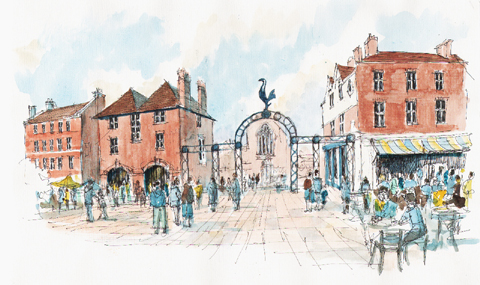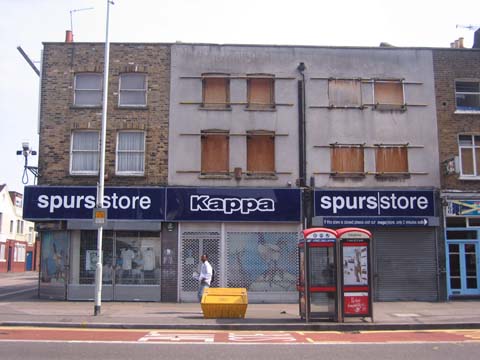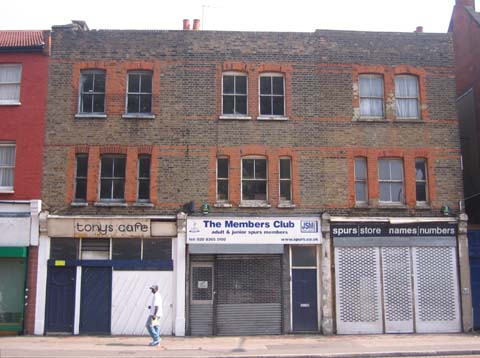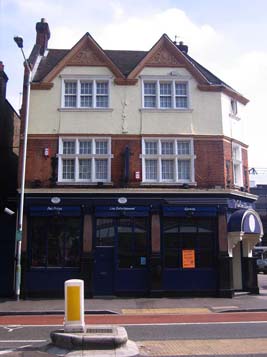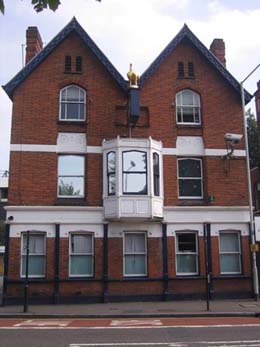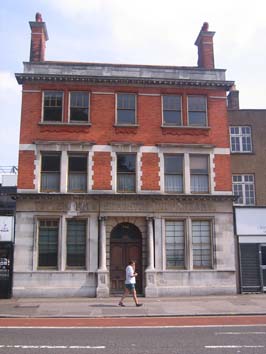15 historic buildings set for demolition under Spurs stadium plans
Tottenham Hotspur Football Club has now submitted an application for the the redevelopment of its stadium in north London. Disappointingly, despite widespread pre-consultation, the plans are virtually unchanged from those exhibited earlier this year. The proposals involve the demolition of a group of historic buildings on Tottenham High Road to provide a piazza in front of the new stadium.
Although welcoming the Club's decision to remain in the borough SAVE is deeply concerned about proposals to demolish a stretch of properties on Tottenham High Road including 2 listed buildings. SAVE has commissioned an alternative study of the High Road buildings from architect Huw Thomas and has previously written to the Club and to the council expressing the following view:
'Whilst we are broadly supportive of the decision for the club to remain in its home borough and redevelop on and around the existing site, we are strongly opposed to the plans for the demolition of a number of buildings on the east side of Tottenham High Road for a public piazza fronting the new stadium.
SAVE shares the view of many football fans that one of the most important and moving elements of the experience of visiting an ‘urban’ stadium, is the process of moving through traditional streets to a ground rooted in the existing community. By clearing a long section of buildings on the High Road, the proposed development would lose the most important element of its urban context - a context which should be viewed as an asset and an opportunity. If this section of the High Road were cleared, as proposed, the new ground would simply assume the character of an out of town stadium and the relationship between it and the existing area would be lost.
The buildings which would be threatened by the new stadium are located between No.790 (Dial House) and the junction with Park Lane, an area which belongs to a conservation area. Two of these buildings, Fletcher House and Warmington House, are listed Grade II and eight others are locally listed. In all there are 15 buildings in this group, dating from the 18th, 19th and early 20th centuries, which make a positive contribution to this conservation area, the demolition of which would be very difficult to justify in light of planning policy guidance as set out in PPG15.
SAVE believes that by preserving these 15 buildings, removing rear extensions and clearing unattractive later 20th-century infill, it would be possible to maintain the important and distinctive linear character of the High Road, whilst creating permeability between it and the stadium to allow large numbers of match-goers to move freely and safely to and from the ground.
Also, the retention of these buildings would enhance and improve the overall quality of the ground redevelopment, both visually and in terms of visitor experience. The repair and conversion of these buildings to retail, bar and restaurant use would also add value to the scheme by creating a lively and upmarket destination on non-match days. Successful examples of integrating characterful shop units with modern development can be seen on Brushfield Street next to Spitalfields Market. The older buildings make a more comfortable, traditional streetscape which softens the impact of the stark new build at street level. Permeability is achieved by opening up access to the ground floor units at both the front and the rear.
We commissioned architect Huw Thomas to undertake a study of numbers 744-766 High Road and to draw the existing buildings as they might look and function if retained, repaired and put back into use. As you will see from the drawings (see above), once restored, these buildings would be enormously attractive and could create a thriving area for eating, drinking, shopping and entertainment. With sections of unattractive later infill cleared circulation space and access routes to the stadium are opened up. Gates, flagpoles and other elements could link the buildings and create a sense of coherence, enclosure and local distinctiveness.
These drawings alone bring home the wastefulness, both in conservation and economic terms, of demolition of so many good, reusable buildings.'
The application is available to view on Haringey Council's website (Ref: HGY/2009/2000).
Objections need to be submitted by the New Year at the latest.
Huw Thomas's Design is now available on a SAVE greetings card.
PRESS ARTICLES
SAVE DOCUMENTS AND PRESS RELEASES

